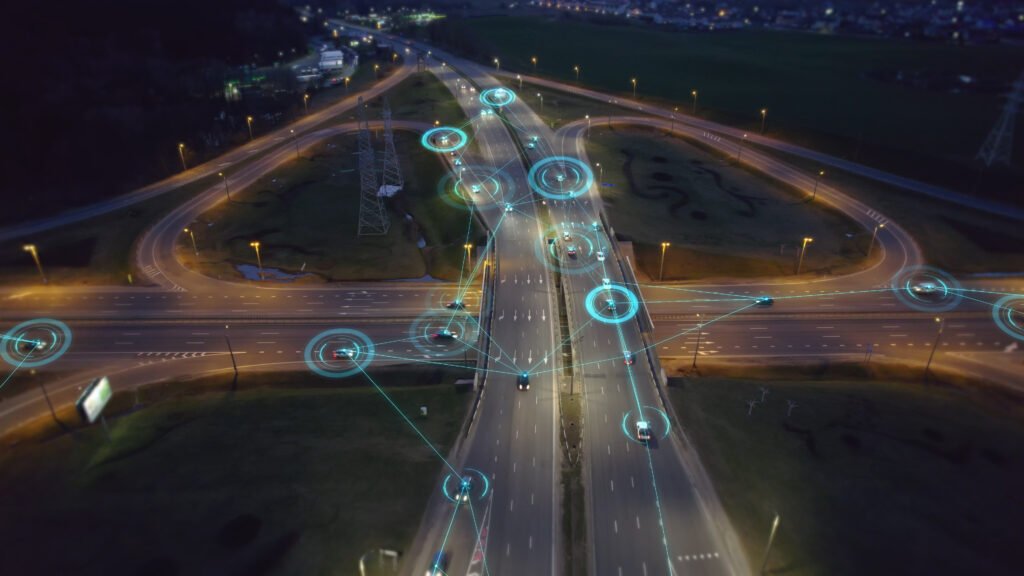Navigating the promise and pitfalls of automated vehicles
In our first article, Inside the automated vehicle industry, we explored AVs as a new type of vehicle operator that’s challenging long-standing assumptions and design standards created exclusively for human drivers. Here authors examine how AVs are already disrupting traditional transportation norms, and our third article, Automated vehicles: What’s next and how can you be ready?, our focus shifts to the major AV sub-industries and how each one has very unique operational goals, regulatory considerations and technical requirements.
Automated vehicles face significant challenges in operating in a human-centric system. For example, product safety regulations do not allow for vehicles without steering wheels, brake pedals, and other components required by humans to operate a vehicle. So, AVs that are “purpose built” can reimagine how a transportation vehicle looks and drives, but they are not technically legal to operate on public roads. Similarly, commercial vehicle human drivers must submit to inspection points and comply with things like hours-of-service limitations. There are pilot programs in the U.S. with the Federal Motor Carrier Safety Administration to determine how AV freight vehicles might operate under a different set of rules.
AVs are also developed largely within a standards vacuum, with each company developing their own hardware and software systems, reinventing everything from basic processes like efficient sensor data processing and fusion, to more complex functions like predicting the future behavior of objects detected around it. Each company also manages safety and redundancy differently, leading to a varied focus and record of industry safety.
Global and relative localization
One of the most significant examples of the difference among AV developers is a concept called localization. Localization is the process by which an AV determines “where” it is now while tracking where it’s been, allowing it to establish its movements during that timeframe. Typically, the distance and time intervals are very small, increasing the accuracy of the AV to understand its movements and make corrections or changes to trajectory and speed without significant deviations.
There are two types of localization, global and relative. Global localization describes where an AV is on the Earth using GPS coordinates that can be prone to large errors and can swing wildly over short timespans. Relative localization describes where the AV is relative to where it just was, without any reference to a global reference frame. This is accomplished by tracking the precise movement of each wheel and combining that data with the steering angle and an inertial measurement unit.
The most effective approach to localization is to use a mix of global and relative information, and relying on one or the other more heavily depending on the situation.
Unfortunately, it’s much easier to simply rely on GPS as a foundation for the AV decision-making processes; however, this approach is very fragile, and AVs that depend on solid GPS signals will have potentially catastrophic failures when GPS is not available, or severely degraded. This can happen in downtown environments in what’s called an “urban canyon” effect. GPS is also completely lost in tunnels and even under bridges/overpasses, and vehicles that can’t compensate for the loss of stable, accurate GPS data will exhibit behaviors like extreme swerving and emergency braking.
Some say the answer to this is complicated and expensive infrastructure modifications that essentially reproduce GPS data when unavailable from satellites. However, this simply passes the fragility to the infrastructure, and potentially the liability. The solution is not infrastructure aids, but a robust approach to relative localization, which some AV companies are very good at. These companies understand that their vehicles must function competently in the human transportation system, which does not rely on GPS at all for vehicle actuation.

Other technical considerations include:
- Efficient path planning to determine possible future routes or specific paths that maximize performance and/or minimize risk.
- Behavior management to define the different states/provinces where a vehicle can operate and the specific criteria to trigger transitions between them.
- Health monitoring systems on a wide variety of AV systems, subsystems, individual devices and data streams to detect abnormalities or failures.
- Command and control systems for typical vehicle movements like throttle, brake and steering.
Context is everything
The function of an AV can’t be separated from its environment because AV software must incorporate specific behavior modes for diverse circumstances. Is there a roundabout? A flashing red signal? Pedestrians and cyclists who cross at random locations? Does the weather include heavy rain, snow or blowing sand? Is there construction or a school zone?
These are just some of the items to consider before deploying an AV because the software must include appropriate behaviors for each condition. Otherwise, that environment will be considered outside the AVs operational design domain. AV testing and deployments have so far focused on locations that have nominal year-round weather, such as San Francisco, CA and Phoenix, AZ.
The intended use of an AV will also largely determine its operational environment. For example, middle-mile AV goods movement, AV transit and robotaxis all primarily operate in urban and suburban environments, and may not need to interface with a highway. Long-haul freight vehicles, for example, spend most of their time traveling at high speeds on highways, and deal less with signalized intersections. A Class VIII vehicle with a tractor trailer might also be required to navigate a dock in an industrial zone, which would not be required for robotaxis or AV buses.
AVs are now operating in real-world environments, and policymakers, planners and industry leaders must reconsider how transportation systems are regulated and managed. While the promise of AVs is tremendous, the shift from human to machine drivers is introducing new dynamics for traffic operations, safety protocols and infrastructure design that must be resolved before widespread adoption can be achieved.
For additional information contact paul.avery@aecom.com or edward.stubbing@aecom.com.






